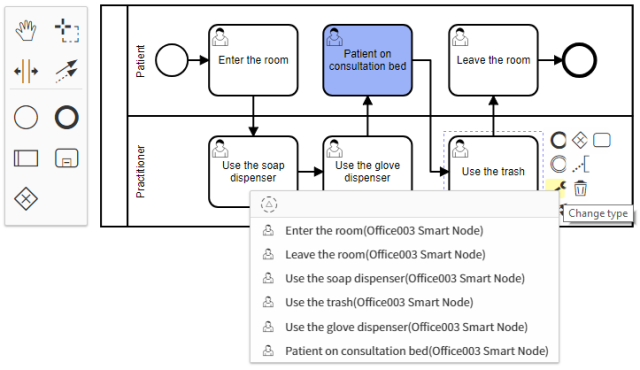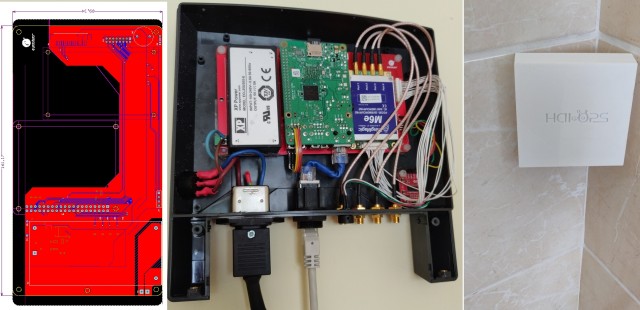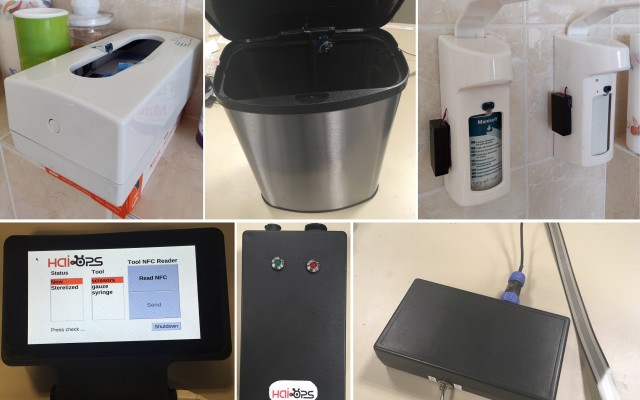WP1 – System requirements, architecture and data models
The first technical work package in the project, it was carried out successfully between M01 – M12 of the project implementation. WP1 was coordinated by UPB, given the University partner’s expertise in the management and coordination of multi-disciplinary research. All project partners contributed to WP1 activities in accordance with their expertise and role in the project. The main objective of WP1 was to prepare technical work in software and hardware device development, integration and testing. The following are the main outputs of this WP:
- A document that structures both the functional and non-functional system requirements for the HAI-OPS platform, linked with project objectives and defined success criteria.
- A document that provides the high-level system architecture, both from a hardware and software standpoint. It identifies the stack of required technologies, hardware-software interoperability, platform security and the required means for protection of personal data.
- A document that details those clinical workflows that are most susceptible to hospital infection within the proposed pilot location, together with detailing models for preventing singular cases as well as infection outbreaks.
WP2 – Software implementation, integration and testing
The main objective of this WP concerns the development of the final prototype of the HAI-OPS software platform, which falls under the responsibilities of IW. WP2 continues the technical work started in WP1 and targets the development of the HAI-OPS software platform. WP2 was carried out between M07 – M30 of the project implementation, and the following outcomes can be reported:
- The initial prototype of the software platform. The first version of the platform was created and presented to the project partners. It included functionalities for clinical staff and patient management. This version was considered to be too early for deployment, and was used as the starting point for the advanced and final prototype implementations.
- The advanced prototype of the software platform. This was the first version that was piloted within the ESK clinic in Skierniewice, Poland. Compared to the initial prototype, support for configurable hardware devices, workflow definition and execution, as well as real-time alerting were implemented.
- The final prototype of the software platform. Completed during the project, it was also deployed incrementally within the pilot location. Compared with the advanced prototype, it included improvements to workflow execution, improved workflow visualization, as well as additional reporting and visualization capabilities. The final prototype represents the baseline for post-project technical development.


WP3 – Hardware component development, integration and validation
WP3 targeted the hardware-side development on the HAI-OPS platform. It mainly consisted of development and integration tasks that were coordinated by the hardware partner INN, together with technical support from IW and UPB. WP3 was underway between M13 – M36 and resulted in the following main outcomes:
- A configurable smart node based on a Raspberry Pi 3 device having Ethernet, Wi-Fi and Bluetooth LE capabilities. Its role is to communicate with sensors deployed in the environment, augment the data received from them and transmit it to the software server.
- A number of deployed sensors in the form of battery operated dummy devices. A selection of the developed sensors is illustrated in the picture below.
- Integration tests and platform validation, ensuring that the developed hardware devices can communicate robustly and safely with the software server.

WP4 – Pilot deployment and evaluation
This WP was coordinated by ESK and grouped tasks related to the pilot deployments and clinical evaluation of the HAI-OPS cyber-physical platform. WP4 activities were carried out between M22 – M36 and involved all project partners. The main outcomes were as follows:
- A document detailing the deployment architecture to be set up at the pilot clinical location. This included a structured description of the monitored workflow(s), required equipment, equipment placement and communication infrastructure.
- The actual deployment of the advanced and final prototypes of the HAI-OPS cyber-physical system. Wireless, battery-operated sensors were deployed within the general practitioner office and at the clinic registration areas. This equipment communicated with the off-site software server in real-time, sending detected actions and conditions and receiving alert information.

WP5 – Project management, dissemination and exploitation
The management, dissemination and exploitation WP resulted in a number of conference participations and scientific papers that were published as part of established conferences or reputable journals.
